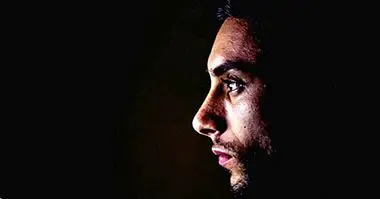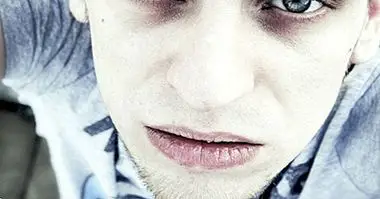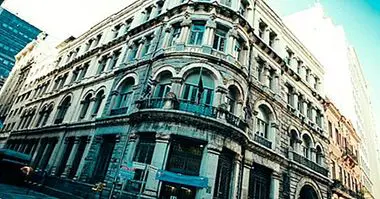The Bioenergetic Therapy by Alexander Lowen
The bioenergetic therapy of Alexander Lowen It is one of the most influential corporal psychotherapies, perhaps surpassed only by the characteroanalytic vegetoterapia of Wilhelm Reich, who was Lowen's teacher.
In this article we will describe what this therapy consists of, as well as what types of character exist according to Lowen.
- Related article: "The corporal psychotherapies of Reich, Lowen and Gendlin"
Biography of Alexander Lowen

Alexander Lowen (1910-2008) was born and raised in New York. His parents had emigrated to the United States from Russia. During her childhood and adolescence, which she described as lonely and stressful, He spent his leisure time practicing sports and other physical activities . Later he also discovered Jacobson's yoga and muscular relaxation.
Lowen obtained three doctorates throughout his life: one in Science and Business, another in Law (both at the City College of New York) and, later, one in Medicine at the University of Geneva, in Switzerland.
Between 1940 and 1952 he was a disciple of Wilhelm Reich, creator of characteroanalytic vegetoterapia , the first corporal psychotherapy. Lowen practiced Reich's methods until Reich began working on his orgone theory, which many experts in psychotherapy considered a real fraud.
It was then that he developed his own clinical contribution: bioenergetic analysis or bioenergetic therapy . In 1956 he founded the Bioenergetic Analysis Institute together with John Pierrakos and William Walling, also former students of Reich. He continued his activity as a psychotherapist until he suffered a heart attack in 2006, two years before his death.
- Maybe you're interested: "Focusing: the body psychotherapy of Eugene Gendlin"
Bioenergetic therapy
Lowen opined that psychopathology stems from conflicts between the innate predispositions of the human being and his need to adapt to society. More specifically, he conceptualized neurosis as a consequence of the accumulation of sexual energy, in a similar way to the approaches defended by Reich, his mentor.
According to Lowen, people we tend to downplay our bodily and affective experience ; on the contrary, we overvalued the cognition and rationalized excessively. However, the psychological and physical dimensions of the human experience are closely interrelated, so that one can cause alterations in the other.
In this context, bioenergetics can be defined as the study of personality from the analysis of the energetic processes of the human organism. In particular, Lowen proposed that energy is naturally anchored in two poles - the head and the genitals - and flows freely between them; alterations in this flow cause disorders.
- Maybe you're interested: "The 10 most effective types of psychological therapy"
The therapeutic process
From the original hypothesis of Reich and his own Lowendesarrollo a therapeutic procedure that he called bioenergetic analysis , although it is known to a greater extent with the name of "bioenergetic therapy".
The objective of bioenergetic therapy is to help the client to obtain pleasure in a satisfactory way with all the basic functions of his organism: the motor, the breathing, the sexuality, the emotions, the feelings and the self-expression. For this it is necessary to release the accumulated tension, both physically and psychologically.
The process of bioenergetic therapy consists of three phases clearly differentiated:
- Become aware of body tension and psychological problems.
- Emotional discharge: expression of frustrated feelings and muscular distension; the defense mechanisms are no longer necessary.
- Liberation of the energy associated with conflicts; access to a full body and psychological experience.
Character types
Lowen described five types of character structure depending on the parts of the body where the flow of energy is hindered . The body regions that this author considered especially relevant are the eyes, mouth, neck, shoulders, chest, diaphragm and waist.
1. Schizoid
People with a schizoid character tend to dissociate their thoughts and emotions, as well as lose contact with reality and to be rejected by the others. Because they grew up in hostile environments, these people are constantly afraid.
According to Lowen, in these cases the flow of energy is blocked in the neck, shoulders and waist. The weight tends to load on the outside of the feet, and the constitution is usually thin.
- Perhaps you are interested: "Schizotypal Personality Disorder: Symptoms, Causes and Treatment"
2. Oral
The oral personality is characterized by infantile attitudes derived from the lack of satisfaction of the needs of affection during early development. This people they are usually narcissistic and dependent on others or excessively independent.
Energy blockage occurs mainly in the shoulders and waist, so limbs tend to be weak and less developed than normal. In addition, breathing is superficial.
3. Psychopathic
In the case of psychopathic character blockages would occur in the diaphragm and waist , which causes that the energy does not flow properly towards the genital pole. These people block their feelings, including sexual ones, and tend to dominate, seduce and deceive others, while fearing that others will take advantage of them in similar ways.
4. Masochist
The masochists tend to show a negative attitude, submissive, insecure and little assertive , and to suppress their intense feelings of hostility and aggressiveness. This character structure is derived from an excessive pressure on the part of adults during the early age that blocks the individuality and pleasure of the person.
On a physical level, the masochistic character manifests itself in energetic blocks in the neck, specifically in the throat and waist. This increases the likelihood of feelings of anxiety appearing. The body is usually stout and short in stature, according to bioenergetic theorists.
- Related article: "Differences between Love, Sadism, Masochism and Sadomasochism"
5. Rigid
This type of personality is characterized by features such as aggressiveness, stubbornness, ambition, pride and compulsive sexuality. Rigid people repress what they consider to be signs of weakness, such as crying, and they fear emotional closeness with other people . Of the five types this is the least pathological because of the good contact with reality.
In this case the tension accumulates to some extent in all parts of the body; If the degree of tensional concentration is relatively low, it can manifest itself in a vital and energetic attitude.



















